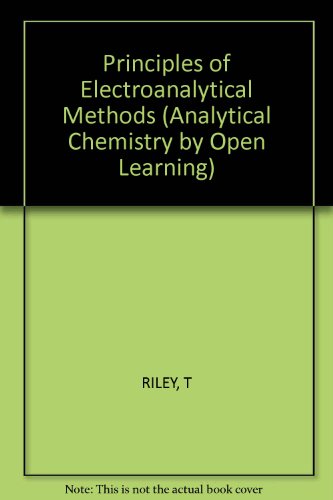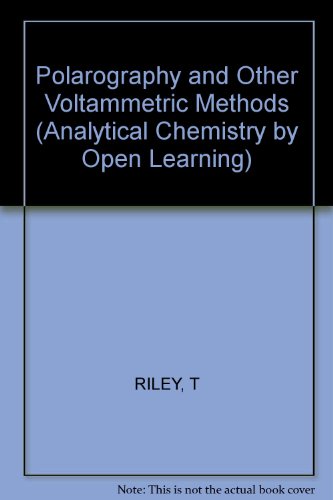Analytical Chemistry by Open Learning
2 total works
This book is designed to introduce the reader to a wide range of electroanalytical techniques. It covers the basic theory, the practical aspects and the scope of individual techniques. From this, the reader is able to relate and compare the different techniques on the basis of common features, such as electrode and solution behaviour and electrical circuitry. Having read this book, and completed the various self-assessment questions, the reader should be able to select a suitable method for a particular application. It is not a substitute for practical work and students are encouraged to acquire 'hands-on' experience in conjunction with reading this book. In view of the increasing use of electroanalytical methods, this book will be a very valuable and practical introduction to students applying these techniques for the first time. This series provides a uniquely comprehensive and integrated coverage of analytical chemistry, covering basic concepts, classical methods, instrumental techniques and applications.
The learning objectives of each text are clearly identified and the student's understanding of the material is constantly challenged by self-assessment questions with reinforcing or remedial responses. The overall objective of Analytical Chemistry by Open Learning is to enable the student to select and apply appropriate methods and techniques to solve analytical problems, and to interpret the results obtained.
The learning objectives of each text are clearly identified and the student's understanding of the material is constantly challenged by self-assessment questions with reinforcing or remedial responses. The overall objective of Analytical Chemistry by Open Learning is to enable the student to select and apply appropriate methods and techniques to solve analytical problems, and to interpret the results obtained.
In recent years electrochemistry has undergone a revival, particularly in its analytical applications. As a non- destructive method, with rapid response times and low detection levels, polarography is now in competition with other methods of analysis, such as spectrophotometry and AAS. A wide range of voltammetric techniques are introduced providing sufficient information for an understanding of the basic theory. Practical aspects and the scope of each technique are explored using features they have in common, such as electrode and solution behaviour and electrical circuitry. Many examples of the electrochemical behaviour of individual compounds or classes of compounds are also included in the form of illustrations.

